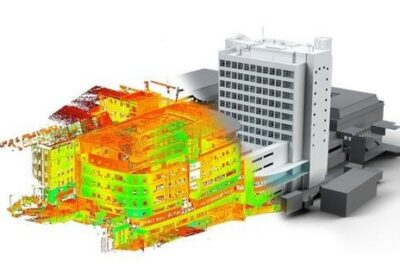
The Dental Implant Procedure: A Complete Guide
Do you find that your teeth are falling apart, and are afraid one day you may lose one or more of them? Do you wish you could restore your smile?
If your answer is yes to any of these questions, then dental implants are the right replacement for you! Many patients schedule implant surgery to treat severe tooth decay or as a response to gum disease. However, a dental implant procedure is an excellent way to provide yourself with a beautiful smile that could last a lifetime.
Keep reading for a guide covering what happens during a dental implant procedure.
Consultation with a Dentist
The first step is to consult with a dentist or oral surgeon to see if you are a good candidate for dental implants. During this consultation, they will request for comprehensive examination that will be the basis of the evaluation. If you have any existing medical conditions, your dentist will also consider them.
The dentist will discuss the risks and benefits of dental implants with you and what to expect during and after the procedure.
Some of the benefits include improved appearance, better oral health, and increased self-esteem. The risks associated with the procedure include infection, nerve damage, and sinus problems.
Comprehensive Examination
A comprehensive examination includes a review of the patient’s medical history, a physical examination, and a thorough assessment of the patient’s oral health. This also includes a review of the patient’s current dental status and a discussion of their treatment goals.
During the exam, your dentist will request tests like X-rays and a CT scan. Once the dentist has a clear picture of your mouth and jaw, they will develop a treatment plan that is customized to your need.
Schedule the Implant
After consultation, if you are determined to be a good candidate, the next step is to schedule when to place the implant.
You will need to prepare for it by making sure you have no food or drink for at least six hours before the time. You should also brush and floss your teeth before the procedure.
The implant procedure is simple, and it can be completed in a single visit to the dentist.
The Actual Procedure
A local anesthetic is used during the procedure to numb the area around the implant. This helps to minimize any discomfort during the process.
The local anesthetic is typically given through a needle that is inserted into the gum tissue. Once it has taken effect, the implant procedure can begin.
A small titanium post is surgically placed into the jawbone. This metal post will eventually support the new tooth or teeth. The area around the metal post is then built up with bone graft material to help keep the post in place.
Once the post has bonded with the jawbone, a small connector piece, called an abutment, is placed on top of the post. The abutment is then covered with a dental crown, which is custom-made to match the shape, size, and color of your natural teeth.
Post-Procedure Care
The procedure does not require a lot of recovery time, and your dentist will give you specific instructions on how to care for your implants and gums as they heal. Here’s a quick guide.
The First Few Days After Surgery
You will need to take it easy for a few days and avoid chewing hard foods. Your gums will be sore and you may have some swelling but these can be controlled with over-the-counter pain medication.
You may also experience some numbness in your gums and lips. This usually subsides within a few weeks.
Caring for Your Implants
It is important to keep the implant clean and free of plaque. Brush and floss as you would your natural teeth. You may need to use an interdental brush to clean between this and the natural tooth.
Look for a toothbrush with soft, nylon bristles that are designed to clean around implants. A good toothbrush will also have a small head and a comfortable handle to help you reach all areas of your mouth. Be sure to brush gently and avoid scrubbing, which can irritate your gums and implant sites.
Make sure to cleanse the implant site with an alcohol-free mouthwash. It should be kept clean and free of debris to promote healing.
Returning to Normal Activity
Depending on the type of procedure that was performed, patients may need to stay home from work or school for a few days to help with the dental implant recovery. Once fully healed, patients can return to their normal activities without any restrictions.
Follow-up Check-Up
Follow-up check-ups help to ensure that the implant is healing properly. The dentist will take X-rays to check the healing process. They will also look for any inflammation or infection.
If everything is healing properly, the dentist will give you a cleaning and adjustment.
Is Dental Implant Procedure the Right Solution for You?
If you are considering dental implants, this guide provides a complete overview of the procedure to help you make an informed decision.
Dental implants are a great way to improve your smile and self-confidence. The procedure is simple and straightforward, and with the right aftercare, your new smile can last a lifetime. Contact your local dentist to see if a dental implant procedure is a right solution for you.
Did you find this article interesting? If so, check out the rest of our blog for more fascinating and informative content on different topics that will surely help!















